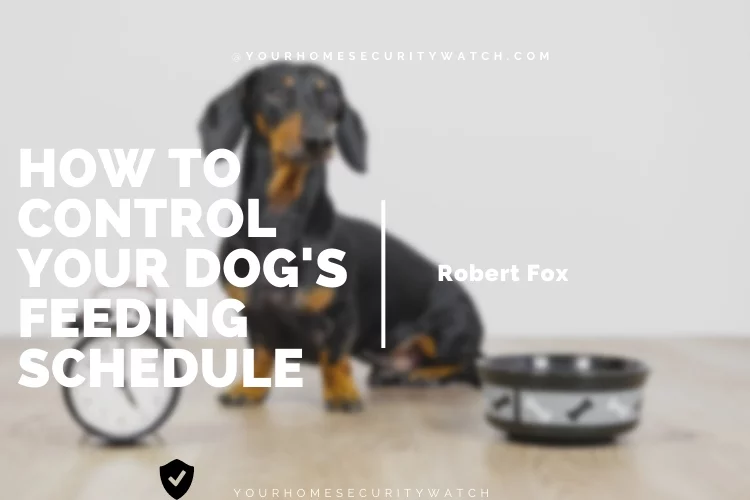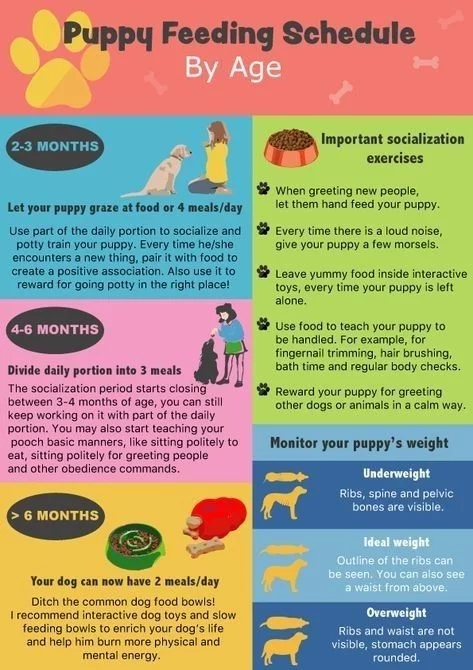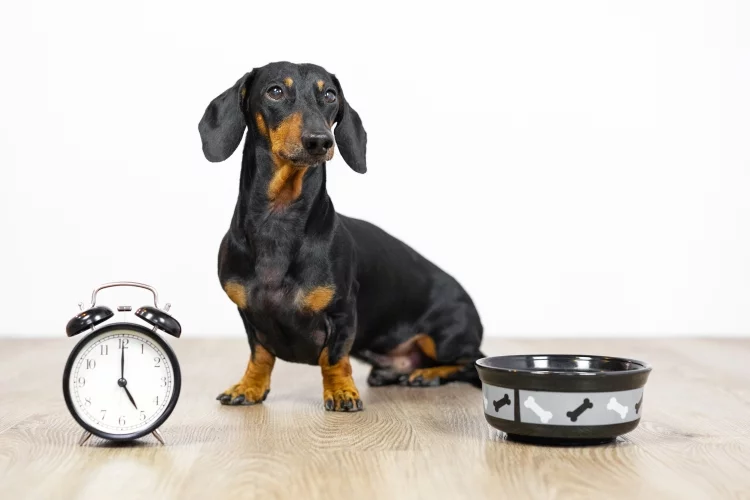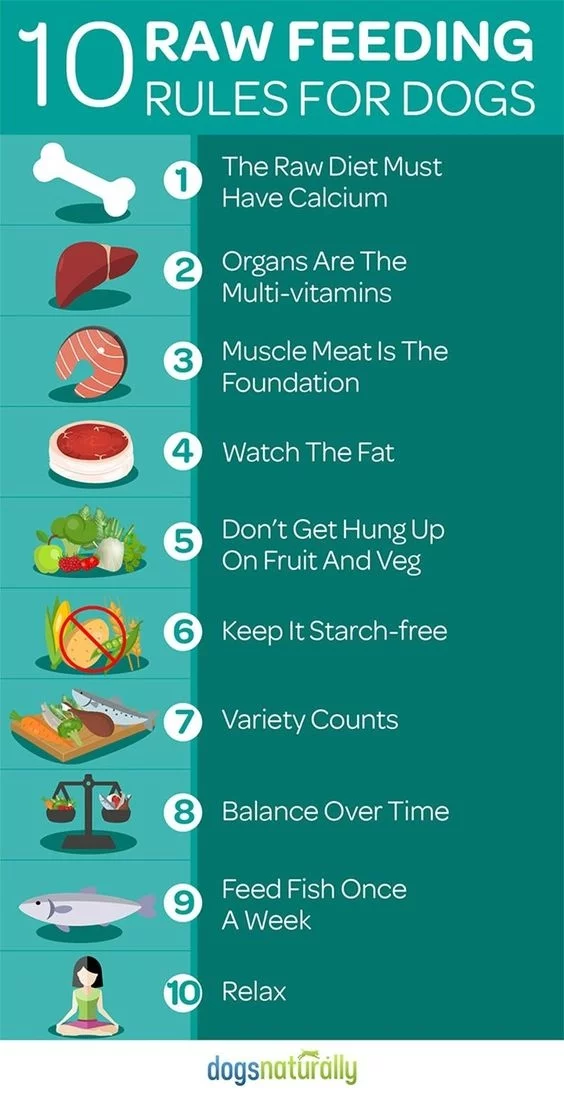How to Control Your Dog's Feeding Schedule
by Robert Fox
There is often a debate between free feeding (leaving a bowl out all day so your dog can choose when and how much to eat) and feeding your dog on a schedule. There are benefits to both, but today we are going to find out how to set up a timetable for your pup!
Contents
Free Eating vs. Scheduled Meals

Free feeding is not always the best choice. In fact, most dogs will end up binge eating, and you will find yourself filling up their food bowl many times a day. You want to avoid this! Overeating can cause health issues like diabetes or heart problems. If you have multiple dogs, they can get aggressive towards each other when it comes to their food.
Setting specific times each day for feeding can establish trust between you and your pup. It can also help regulate their weight, and you will be known as your dog's pack leader, as you are the one providing the food.
They have internal clocks; much like humans so it may take a while for your pup to get used to a scheduled feeding but they will eventually learn, so don't give up!
Feeding Frequency and Amount

Most healthy adult dogs should only be fed twice a day whereas puppies under five months should be fed three times a day.
You also want to make sure you are feeding your dog the correct amount. Most brands of dog food have suggested serving sizes per day on the bag depending on the weight of your pup. There are other contributing factors such as the health of your dog and his amount of activity. If your dog is overweight or has health issues, discuss his feeding amount with your vet.
A balanced diet and exercise are very crucial. A dog that gets minimal exercises should eat about 10% less than the suggested serving. Very active dogs should receive about 20% more food.
You want to adjust your pup's feeding schedule with yours. Setting precise times to feed is important! You don't want to start the diet program but have to readjust due to a conflict with work or other events.
Dog Feeding Plan Tips

• You want to divide the amount of food suggested per day into two bowls (three if you are working with just a puppy).
• For the first few days you want to start by raising the food above your pup's head, so he's aware that you have his yummy food for him. If you have begun obedience training, you can use the command "sit" to help with this process. After he is sitting, place the bowl on the floor so he can eat.
• Give him about fifteen minutes for each feeding, regardless if he finishes the food. He will start eating it all by the second or third day. His tummy will catch up with him!
• Give him eight to ten hours between feedings.
• By the third week, your pup should be adjusted, but if he isn't, you can try holding off on treats during the day, so his hunger grows.
• If you have been free feeding your dog for years, you want to start with a gradual change. The night before you start, remove the food bowl from his eating area.
• Feeding can also be a perfect time to practice your obedience training! To implement the "sit" command so you can create a patient pup instead of an over-eager eater, only lower the bowl if your dog stays sitting. If he jumps up, out of his sitting position, before the bowl hits the floor, raise the bowl back up. Each attempt you should be able to get the bowl closer to the ground. Don't put the bowl down unless he stays sitting. Once that is accomplished release him from his sitting position with an "okay."
• If he doesn't eat the entire amount on the first feeding, do not double the volume during the second feeding!
• Do not mix treats or wet food with the dry food to entice him to eat. It seems like a rewarding attempt, but you're only teaching your pup that if he refuses to eat, he will receive goodies. Treats should only make up 5-7% of his diet to maintain a healthy weight.
• Leave your dog be while he eats. If you hold him while he is eating, that can cause anxiety or even aggression towards you.
• Don't feed him directly before or after exercise.
• A feeding schedule is also great when you are house training your puppy! About fifteen to twenty minutes after feeding, he will have to go outside. A diet program equals a bathroom schedule!
• You can always leave the bowl out all day but with only the exact suggested serving. Do not refill the bowl if he eats it all in one sitting. He will learn to space out his eating habits.
• If your pup has separation anxiety, do not feed him directly after you return from somewhere. This can heighten his anxiety when you are gone.
• Don't feed your dog human food. There are some foods (such as chocolate) that can be very harmful and even poisonous.
Conclusion

After a few weeks, you should have a patient pup that is ready to eat! His appetite will start lining up with his feeding time. Remember to keep to your schedule! That internal clock will be depending on it.
More from my site
 |
 |
 |
 |

About Robert Fox
Rob Fox is a former hydro worker who used to teach self defence in Miami for 10 years. He's currently enjoying his retirement, playing cribbage and golf with his buddies, locksmithing and home security in his spare time. Rob is an avid reader, and has even written a few books on the subject of self defence.
Thoughts on "How to Control Your Dog's Feeding Schedule"
 |
 |
 |
 |
Check These Out
You can Get FREE Gifts. Furthermore, Free Items here. Disable Ad Blocker to receive them all.
Once done, hit anything below
 |
 |
 |
 |